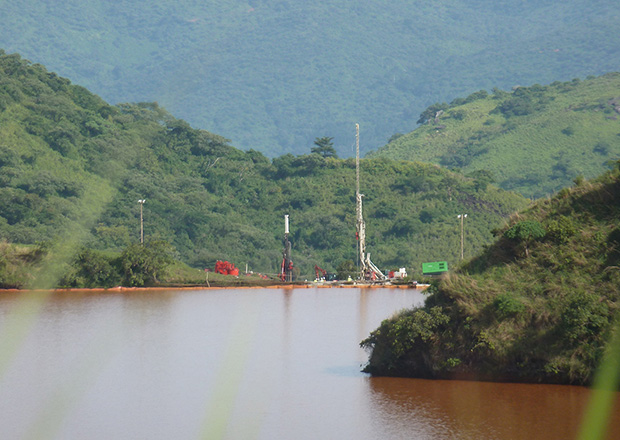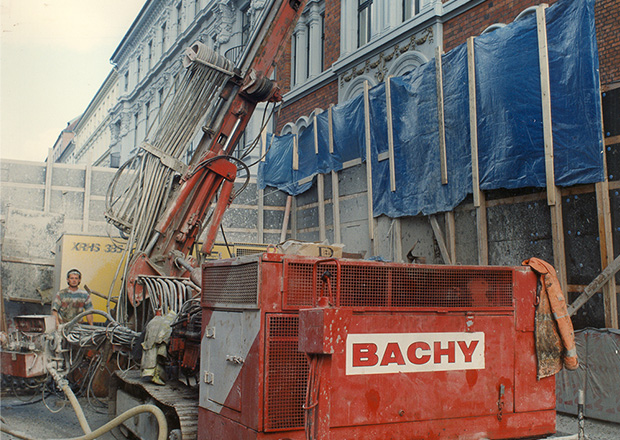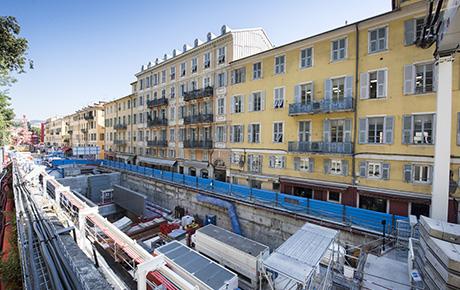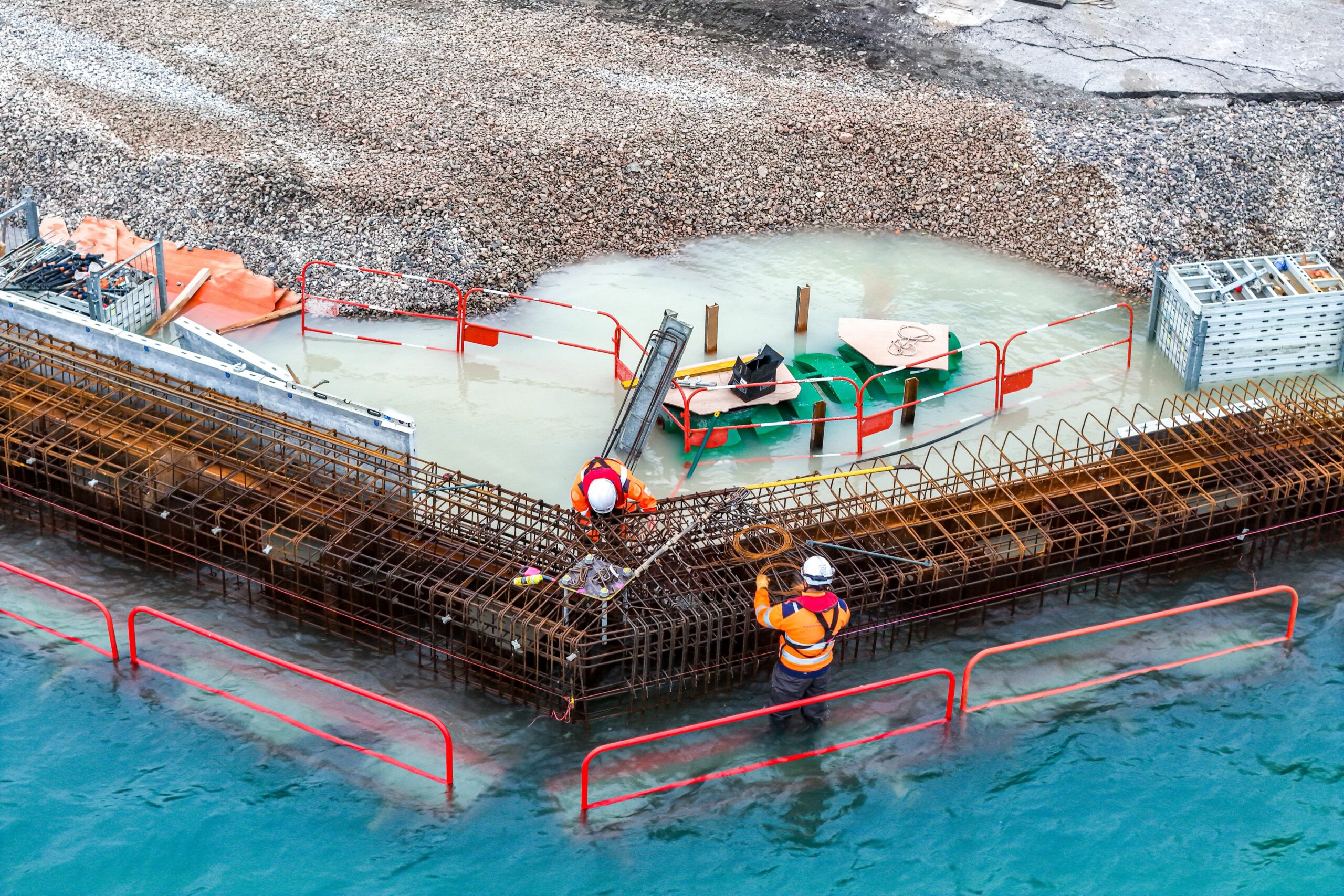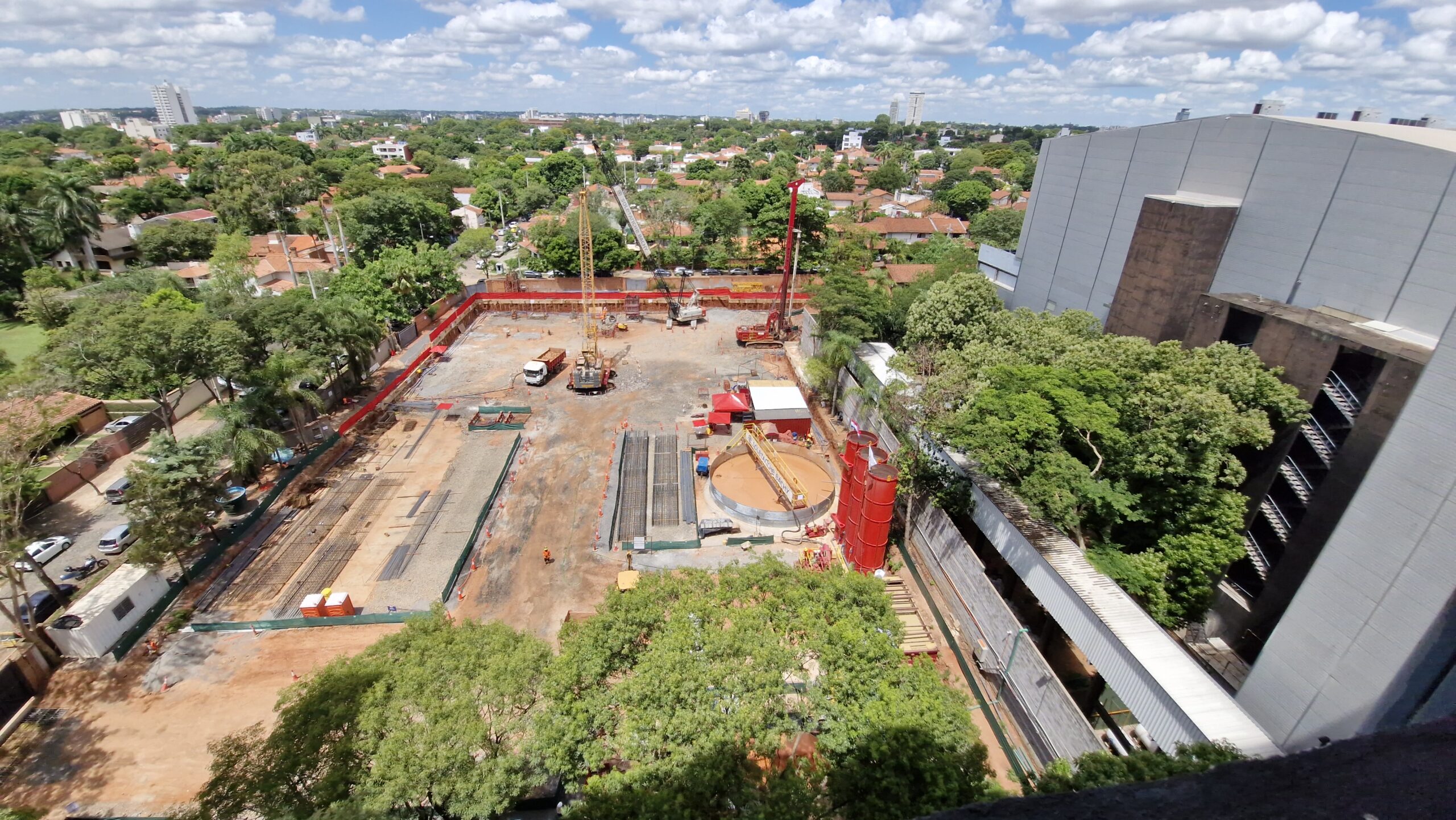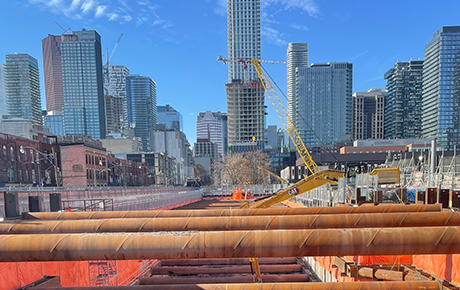Project Description
Soil-cement columns constructed by erosion
Jet grouting is a fairly common technique, but one in which Soletanche Bachy has unique expertise.
What is Jet Grouting?
The jet grouting process involves cutting the soil with a high velocity jet of fluid(s) and mixing this eroded soil with a self-hardening grout to form columns and other structures in the ground.
The power delivered by the jet breaks up the native soil by erosion along a given radius depending on the type of soil and its compactness. Part of this soil is replaced by the cement grout brought by the jet. This replacement of a certain amount of native soil depends on the technique used and the final objective. The excess volume of mixture exits freely towards the surface during the process.
In the vast majority of applications, the equipment is rotated and raised so that the soil-cement component formed in situ is roughly cylindrical (a column).
Jet Grouting applications
The process applies to all lose ground or soft rock, mainly for bracing and subject to certain waterproofing conditions:
Soil-cement columns constructed by erosion
Jet grouting is a fairly common technique, but one in which Soletanche Bachy has unique expertise.
What is Jet Grouting?
The jet grouting process involves cutting the soil with a high velocity jet of fluid(s) and mixing this eroded soil with a self-hardening grout to form columns and other structures in the ground.
The power delivered by the jet breaks up the native soil by erosion along a given radius depending on the type of soil and its compactness. Part of this soil is replaced by the cement grout brought by the jet. This replacement of a certain amount of native soil depends on the technique used and the final objective. The excess volume of mixture exits freely towards the surface during the process.
In the vast majority of applications, the equipment is rotated and raised so that the soil-cement component formed in situ is roughly cylindrical (a column).
Jet Grouting applications
The process applies to all lose ground or soft rock, mainly for bracing and subject to certain waterproofing conditions:
If the waterproofing function is used, and depending on the target criteria, jet grouting can be combined with an additional grouting treatment. The jet grouting process can be applied to large civil engineering works as well as minor basement underpinning of buildings in confined spaces.
The jet grouting process can be broken down into three different methods:
-
Single fluid jet grouting : Grout is pumped at high pressure through a set of nozzles located just above the drill bit. The jet of grout breaks up and binds the surrounding soil.
-
Double fluid jet grouting : Grout is pumped at high pressure, surrounded by a concentric jet of compressed air, which enhances its erosion efficiency.
- Triple fluid jet grouting : The soil surrounding the drill string is broken up by a high-energy jet of water surrounded by a concentric jet of air, while the binder is injected through a second nozzle.
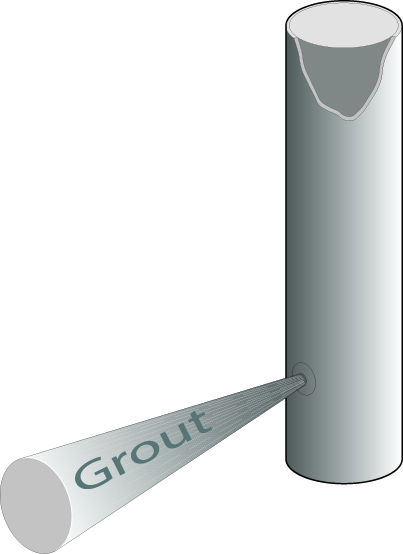
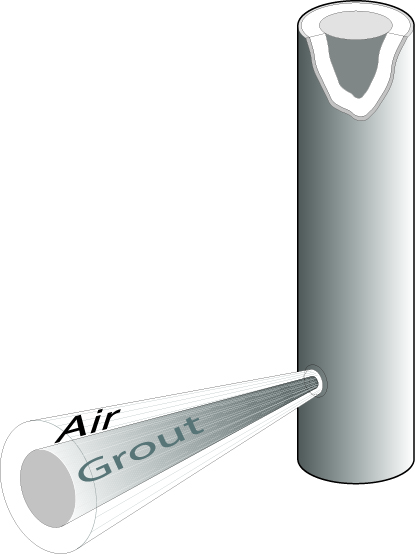
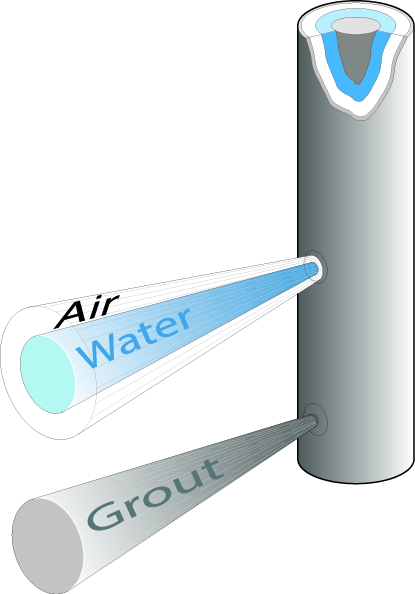
Column dimensions
Depending on the jet’s parameters (flow, pressure and method used), the type of soil and the equipment used, the average diameter of the columns may vary between 60cm and several metres. Depths of up to 100m can be reached. The columns can be vertical, angled or even sub-horizontal.
What are the advantages of this technique ?
A solution that adapts to all types of soil
The possibility of modifying the diameter of the column by modifying the parameters of the jet
A process that requires little space (small footprint and limited height)
Columns that can be constructed in contact with concrete or masonry structures
The possibility of constructing large columns from small boreholes
The ability to construct column sections by moving the jet to a specific angle without completely rotating it
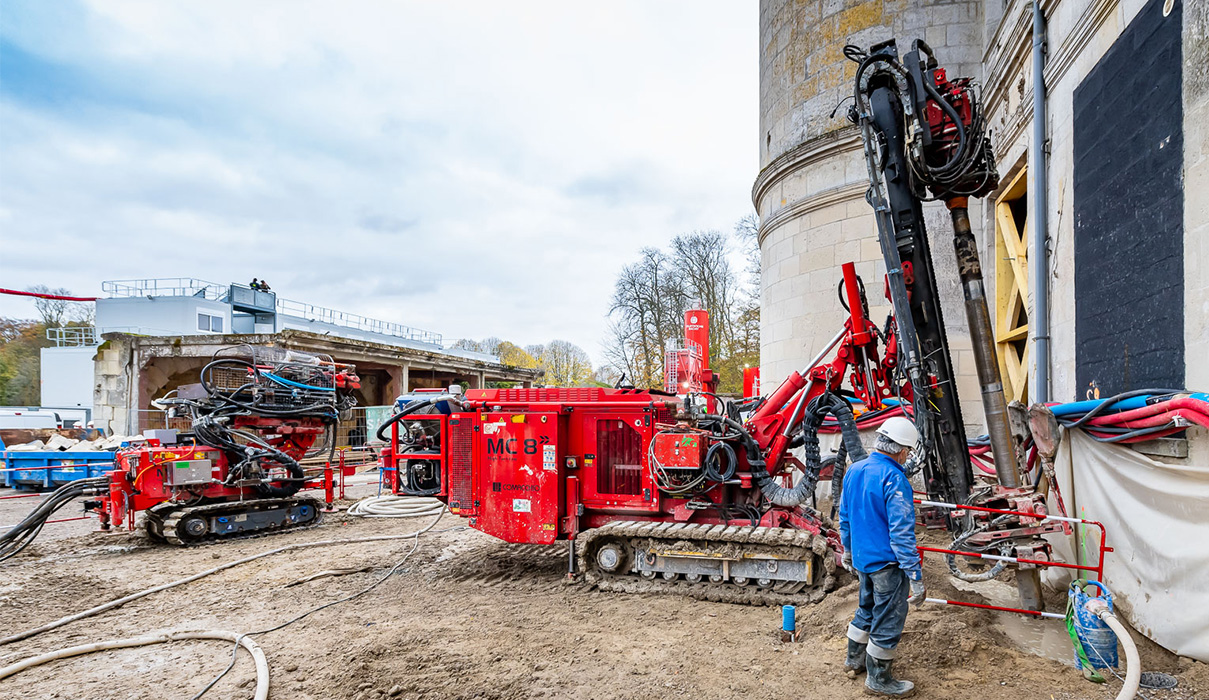
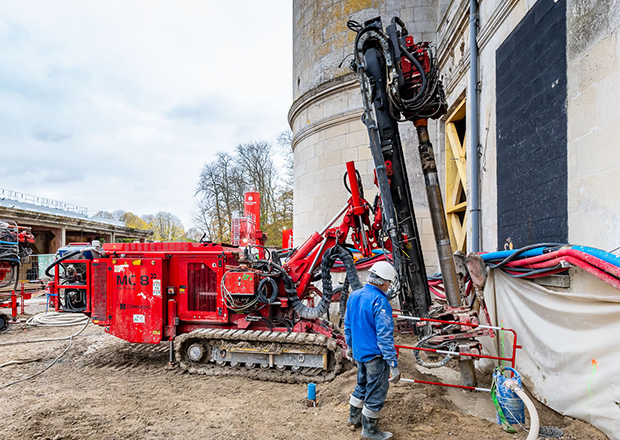
How are Jet Grouting columns made ?
Jet grouting is carried out using a drilling rig which injects a grout jet into the desired soil depth, in order to erode the soil around the rods and mix it with the grout up to a certain distance.
“Very high-pressure” equipment is used to pump the grout through one or more small-diameter nozzles placed at the end of the drill rods. A sudden reduction in diameter between the rods and the nozzle considerably accelerates the speed of the fluid to form a liquid jet.
A column is formed by rotating the rods and gradually raising them. This makes it possible to gradually create structures formed of several intersecting columns.
During the construction of a jet grouting column, the surplus materials (a mixture of soil, water and cement) are recovered on the surface for disposal in landfill.
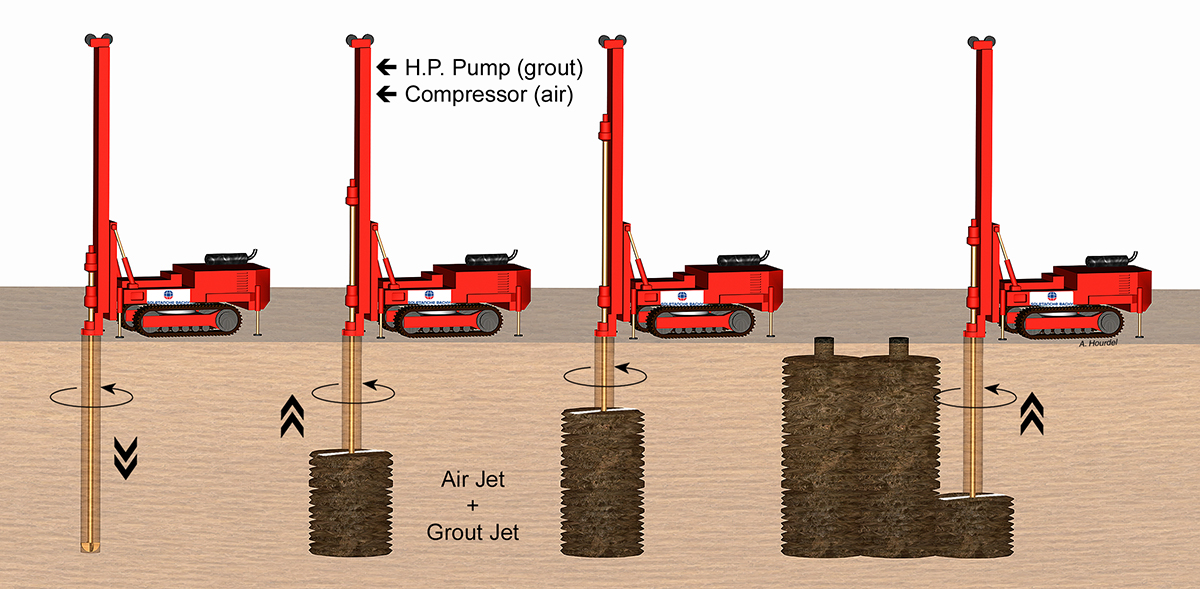
Why work with Soletanche Bachy ?
Execution controls and monitoring
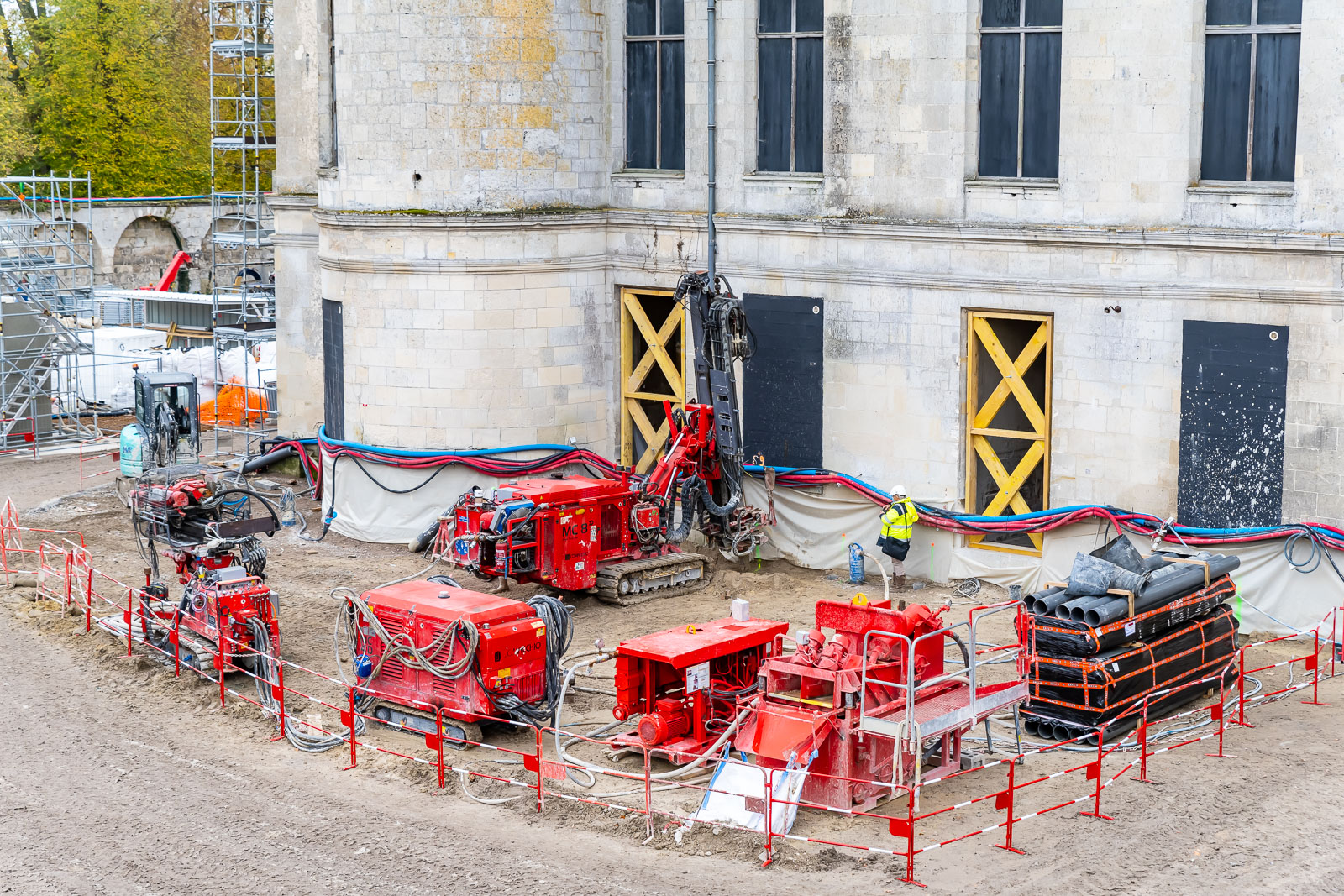
Monitoring the execution of jet grouting columns at every stage :
– Control of the properties and composition of the cement grout,
– Real-time control and adjustment of the positioning of the equipmentand the verticality of the completed structure,
– Assessment of the characteristics of the final mixture by testing discharge samples at the drill head during construction.
– A supervision system to control the process and control the operating parameters (pressure, flow, ascent speed, etc.)
CYLJET® or an electrical cylinder
The column diameter can be estimated using a geophysical method known as CYLJET® or an electric cylinder.
The diameter is estimated by analysis of the difference in electrical resistivity between the column and the surrounding ground. This method is based on resistivity measurements taken by a probe placed in the column and interpreted in the office using digital modelling.
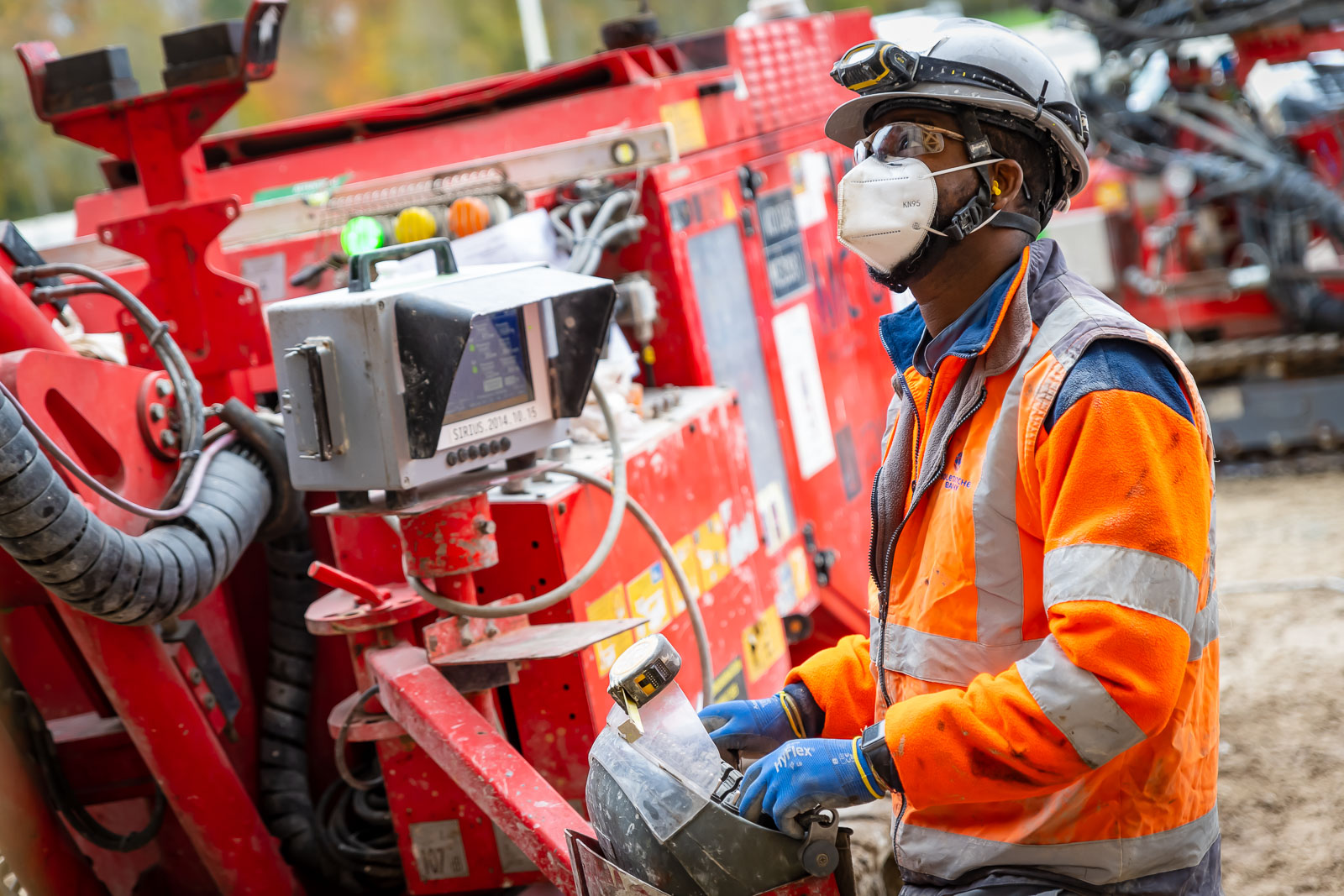
Did you know ?





